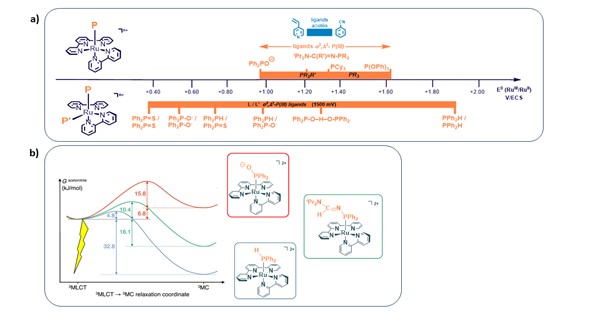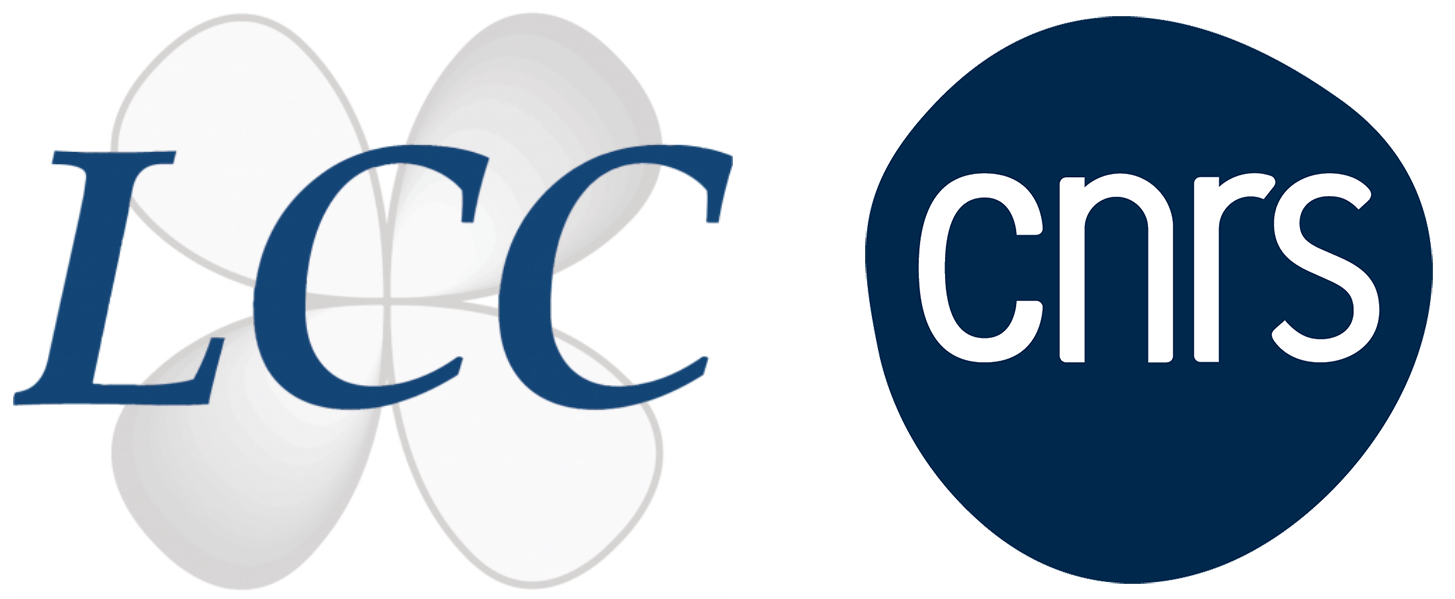LCC
Complexes and Heteroelements
Photophysical and Electrochemical Properties
Our fundamental research activity in the field of molecular complexes with reductive and oxidative properties focuses on the interaction between transition metal chemistry and the chemistry of heteroelements from groups 13 to 15, such as phosphorus, nitrogen, and boron. We use our expertise to tune the redox and photophysical properties of photosensitive metals through the electronic properties of heteroelements, thereby generating complexes with unique characteristics.
Our work involves the design, synthesis, and evaluation of photosensitive molecular complexes with reductive and oxidative properties. These compounds serve as fundamental building blocks for the construction of hybrid materials with remarkable electrochemical properties, through association with inorganic matrices such as metallic nanoparticles or inorganic oxides of the aluminosilicate type. These hybrid materials can act as electron reservoir–distributors, which we test for multielectronic chemical transformations such as water splitting.
All our studies are carried out in collaboration with theoretical chemists, in order to gain a deeper understanding of the various processes we observe experimentally.
Example 1 :
– Anionic phosph(in)ito (″phosphoryl″) ligands : non-classical ″actor″ phosphane-type ligands in coordination chemistry, P. Sutra, A. Igau, Coord. Chem. Rev., 2016, 308, 97-116, doi.org/10.1016/j.ccr.2015.07.002 ; Can a functionalized phosphine ligand promote room temperature luminescence of the [Ru(bpy)(tpy)]2+ core? E. Lebon, S. Bastin, P. Sutra, L. Vendier, R.E. Piau, I.M. Dixon, M. Boggio-Pasqua, F. Alary, J.-L. Heully, A. Igau, A. Juris, Chem. Commun., 2012, 48 741-743 ;doi.org/10.1039/C1CC15737J
These projects are conducted in collaboration with:
- In Toulouse: Fabienne Alary, Martial Boggio-Pasqua, Jean-Louis Heully – Laboratoire de Chimie et Physique Quantiques, UMR 5626, IRSAMC, CNRS and University of Toulouse
- In Paris: Julien Pilmé – Laboratoire de Chimie Théorique, Sorbonne Universités, UPMC, Université Paris 06, UMR 7616
- In Bologna: Alberto Juris – Dipartimento di Chimica “G. Ciamician”, Università di Bologna
- In Messina: Fausto Puntoriero, Sebastiano Campagna – Dipartimento di Scienze Chimiche, University of Messina

a) Modulation of the oxidation properties of ruthenium polypyridine complexes by organophosphorus ligands; b) Modulation of the photophysical properties of ruthenium polypyridine complexes by organophosphorus ligands.
Example 2 :
– When organophosphorus ruthenium complexes covalently bind to ruthenium nanoparticles to form nanoscale hybrid materials, E. Martins Morales, Y. Coppel, P. Lecante, I. del Rosal, R. Poteau, J. Esvan, P. Sutra, K. Philippot, A. Igau, Chem. Commun. 2020, 56, 4059-406, doi.org/10.1039/D0CC00442A.
This work is carried out in collaboration with R. Poteau, Laboratoire de Physique et Chimie des Nano-Objets (LPCNO), Institut National des Sciences Appliquées (INSA) in Toulouse.

Hybrid nanomaterial consisting of an organophosphorus ruthenium complex covalently bonded to the surface of a ruthenium nanoparticle.

LCC CNRS
Laboratoire de chimie de coordination du CNRS
205 route de Narbonne, BP 44099
31077 Toulouse cedex 4
France




